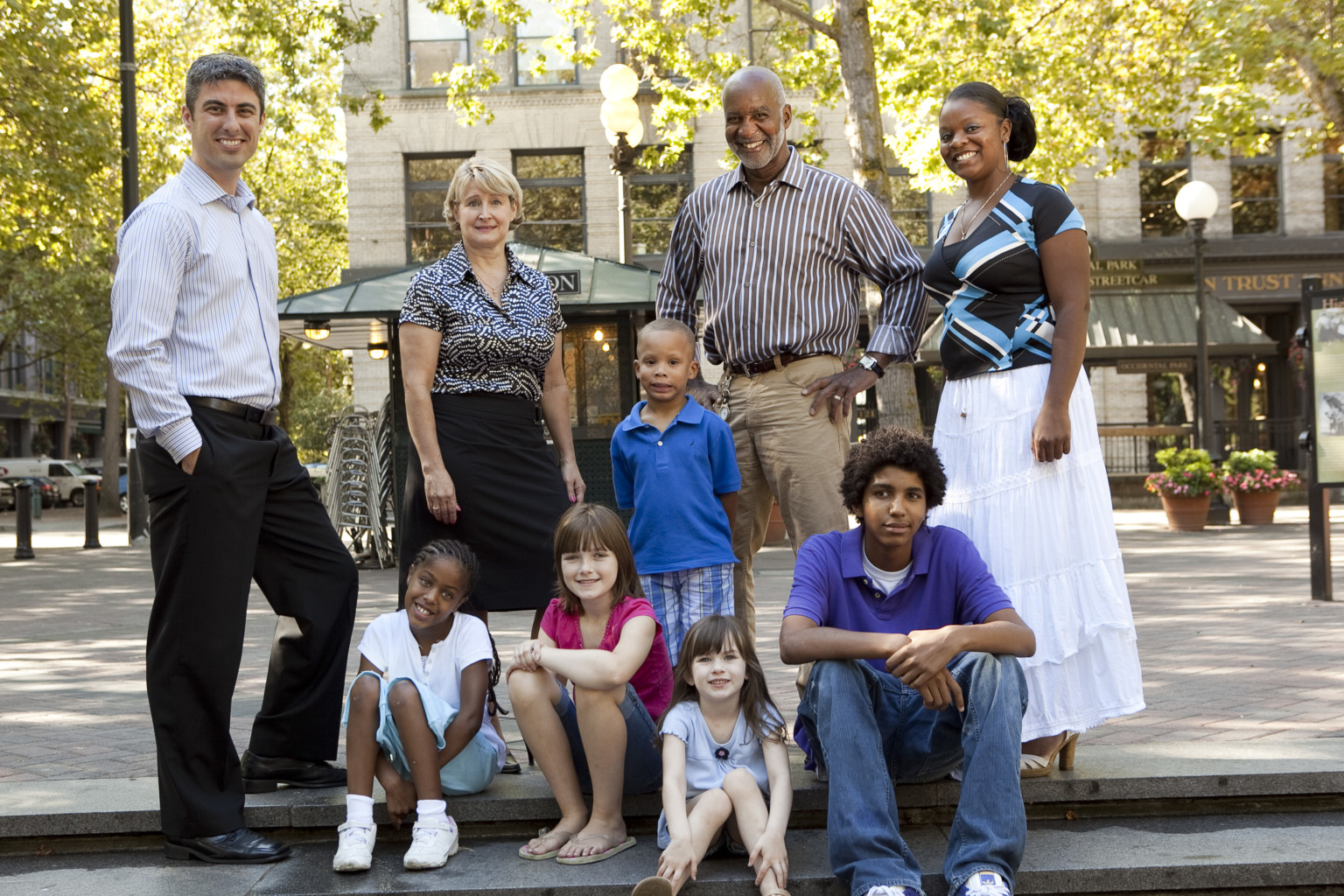Unassuming Heroes:
Crystal’s Twenty-Year Anniversary
at CASA of Northwest Arkansas
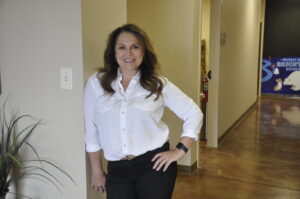
Crystal Vickmark has been an integral part of the business side of CASA of Northwest Arkansas during her nearly 20 years as our Executive Director.
For Crystal, though, leading CASA and the children we impact is a much more personal endeavor.
To understand just how personal our mission is for Crystal as she approaches her 20-year anniversary at CASA requires little more than a glance at the pictures in her office. Inside one of those frames rests the face of a young girl, one of nearly 20 children Crystal’s sister fostered at her home in South Dakota.
Crystal was around many of the foster children who came and went under her sister’s care, including the three her sister later adopted. But it was the little girl in the picture in Crystal’s office whom she grew particularly close to and remains a part of her daily thoughts even today.
“I keep it there and look at her every day for inspiration,” Crystal said. “What brings me joy at the office and my job is the people here. It’s knowing that the work we do is so important to so many.”
In celebration of Crystal’s 20-year anniversary at CASA, we asked her to reflect on some of the achievements, challenges, and milestones that she has been a part of leading during her time in Northwest Arkansas.
CASA: What does an Executive Director do?
Crystal: My director role has changed a lot over the past 20 years. When I took the position, it was everything; there was no development/communication staff, no office admin, no team leads, or even a program director. Our advocate supervisors did volunteer training and management, and I did everything else— fundraising, newsletters, letters, payroll, recruiting volunteers, outreach, etc.
Now my role is implementing and monitoring our strategic plans, ensuring that we are making movements toward our goals, and we are following policies and procedures and the law. I have the time and capacity to look forward. Back then, we were just making sure we were moving forward one day at a time.
CASA: What is a memory you have of the true impact a CASA Volunteer can have?
Crystal: There are so many volunteer stories that makes me go, ’wow, this is why we do what we do.’ [In one case], the teenager would act out after school after doing homework, and no one knew why. It turned out he had a second-grade reading level. It was the volunteer that noticed and brought it to everyone’s attention. Without the advocate, I just don’t think it would have been found out.
CASA: What have been some of the largest areas of growth you’ve seen for CASA?
Crystal: The largest areas of growth have been when we were able to purchase and move into our current building. We were able to triple our office space. This allowed us to add on staff, which in turn allowed us to recruit and train more volunteers, ultimately allowing us to serve 100% of children in foster care.
When we hit 100%, I cried. The goal setting was crucial; every day we could see how many more children we had to serve and how many more volunteers we needed to recruit to make it. We had been lasered focused, working towards this goal for so long that when we actually were about to achieve it, it felt like a dream.
CASA: What have been some of the most challenging areas?
Crystal: There were many difficult times over the years, but the pandemic… The pandemic was hard. I could not impart to my staff just how much we worried about their safety and their feelings, our volunteers, and the children we serve.
For the first few months of the pandemic, our leadership focused on our policies and how we can ensure the safety of our staff, volunteers, and children. There was no handbook on how to lead an organization through a global pandemic.
As time went on, the concern over our children didn’t wane. We knew children, who were no longer under the eyes of our teachers, were likely at home in less-than-ideal situations with underemployed and overly stressed parents.
We continually felt the weight of this responsibility of ensuring the safety of all these children.
We did have some positive changes that came out of it though. Like many organizations, we have been able to switch to a hybrid work schedule which has allowed many of our staff to adjust their schedules and create a better work-life balance. Our staff enjoys the freedom to be there for their family when they need them most.
CASA: What have been some of the most surprising areas?
Crystal: I didn’t realize how much community support we would have for our agency. I came in new to the NWA community, to Arkansas, and new to nonprofit leadership. When attending meetings with other CASA programs, I quickly learned that other programs didn’t have the same opportunities that we did. Northwest Arkansas has a heart for philanthropy!
You just need to ask, and our community is there to support us.
CASA: If someone gave CASA $1 million dollars today, how would you invest it in the organization?
Crystal: Right now, there are three areas I would invest in. A parking lot, staff benefits, and family preservation.
Just before the pandemic, we completed the renovation of our Walker Family Foundation Training Room, which increased our training capacity by more than double, but then we went entirely virtual. As we’ve begun transitioning back to in-person sessions, a major problem became apparent— there are just not enough spaces for guests and volunteers to park onsite safely. So, we’ve had to begin capping our training sessions to ensure the safety of our guests, staff, and presenters.
I would also ensure our staff benefits are what they need to be. Even though we have made big headway over the last few years, I still have hopes of adding some kind of mental health component so that our staff and volunteers can have access to free mental healthcare.
Now that we are serving 100%, the natural next path is helping children stay in the home and not have to be removed. Prior to CASA, I worked in family preservation and feel that adding a CASA volunteer to the mix would add tremendous value to families in crisis, our community, and the child’s future.
CASA: What would next level mean for CASA?
Crystal: We are next level! I feel strongly that our CASA program is one of the top in the nation. On a local level, we are well known and have become an organization that our community wants to be part of. We meet all of our standards with flying colors and are always open to continual improvement.
If we were to add additional staff, it would be someone to help with data and data integrity. There are children we could help even more if we knew their educational, social, or medical baseline. There are assessments available in our database, but we do not have the capacity to train our staff and advocates to use them at this time.
CASA: What is your superpower?
Crystal: My superpower is being able to hire people and get out of their way. I look for people that have different ideas, people that are excited about the mission and its potential and envisioning it together. There’s no way that this could happen without staff members committed to CASA.
CASA: Please describe our volunteers in one or a few words.
Crystal: Unassuming Heroes. Our advocates do not do this important work for money or fame, but because it’s the right thing to do. Sometimes they may not even realize the impact they make. A younger child might not remember their volunteer’s name as they grow up, or maybe even their actions— but their lives changed because of that volunteer. They were put on another path because of that volunteer. The impact is always there for the child.
Congratulations on 20 years, Crystal!
Want to learn more about CASA of NWA?
Interested in finding your own way to make an impact?



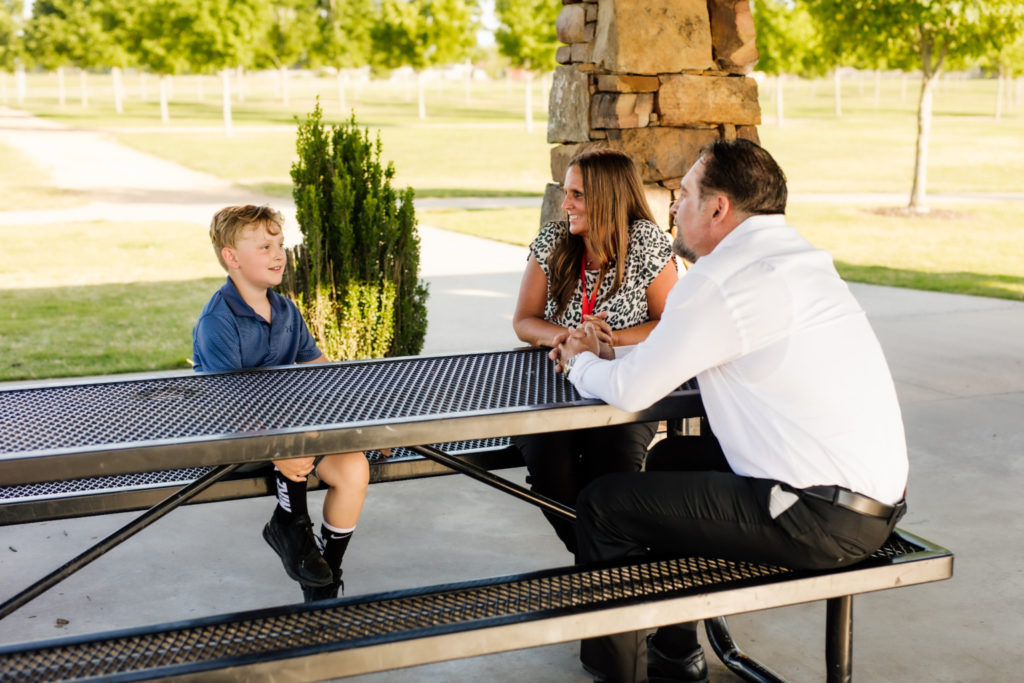
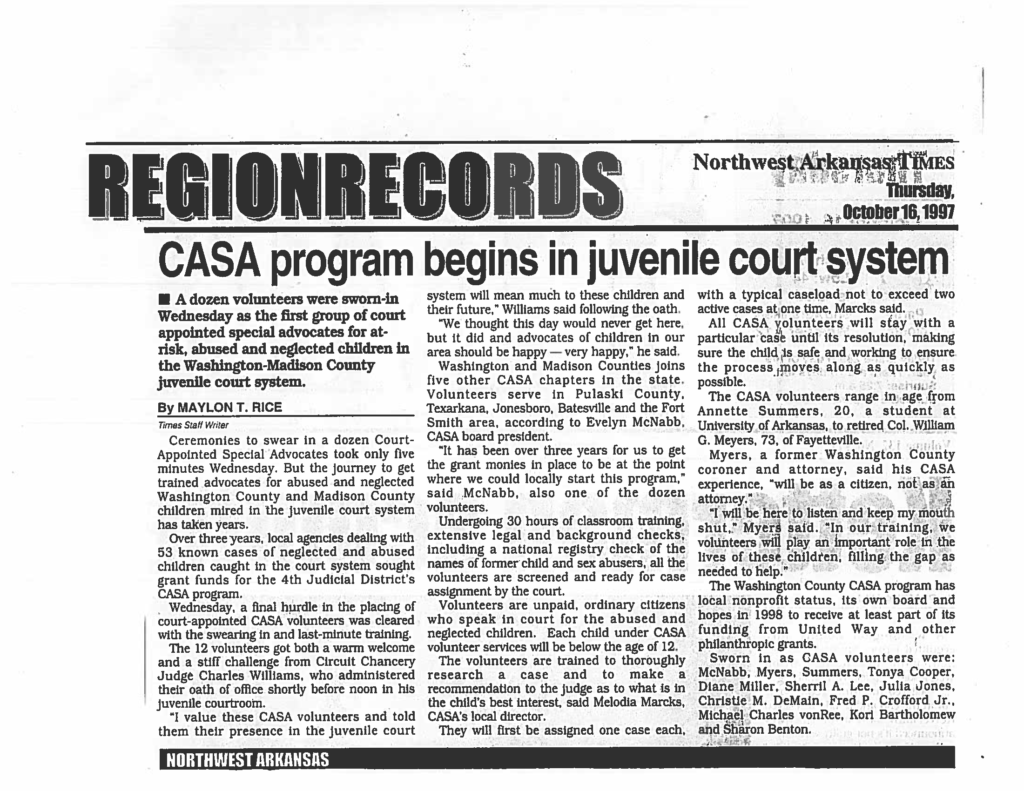

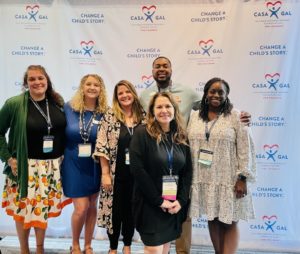
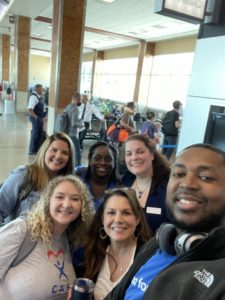 finding family members and making those connections. Also connecting with resources in the family’s area. This could potentially be a new tool for our program and advocates to utilize to aid with family preservation. ” – Amanda Q.
finding family members and making those connections. Also connecting with resources in the family’s area. This could potentially be a new tool for our program and advocates to utilize to aid with family preservation. ” – Amanda Q.